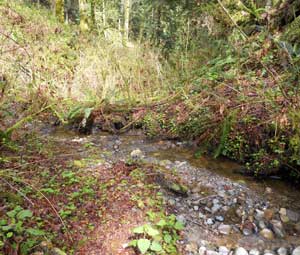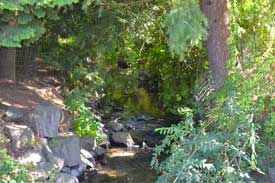Projects
The following is a list of projects performed by Richard Martin Groundwater (also known as Richard Martin Consulting) and includes both completed and ongoing projects. Projects are listed in approximate chronological order starting with the most recent. Descriptions are not included for all projects because they are either in the early stages of the project, the work performed to date is still in draft form and not publicly available, or client confidentiality does not allow for a description. If you are interested in additional information on a particular project, please contact us. Click on blue titles to expand the links below.
![]() Sound Transit North Link Light Rail Construction Management
Sound Transit North Link Light Rail Construction Management
![]() Seattle Public Utilities Stormwater Code & Manual Update
Seattle Public Utilities Stormwater Code & Manual Update
![]() Seattle Public Utilities Green Stormwater Infrastructure Program Management
Seattle Public Utilities Green Stormwater Infrastructure Program Management
![]() Seattle Public Utilities Ballard Natural Drainage Solutions 2015 Options Analysis
Seattle Public Utilities Ballard Natural Drainage Solutions 2015 Options Analysis
 Seattle Public Utilities Delridge Natural Drainage Solutions 2015 Options Analysis
Seattle Public Utilities Delridge Natural Drainage Solutions 2015 Options Analysis
As part of the effort to reduce combined sewer overflows and improve water quality in Longfellow Creek, the City of Seattle is in the process of designing natural drainage systems for portions of the Delridge area. We have been involved with siting selection for potential infiltration structures, including rain gardens and underground injection control (UIC) wells, and developing an exploration and testing program for the preferred blocks in the neighborhood. Future work includes mounding analyses to evaluate infiltration feasibility of rain gardens and the potential impact of infiltration on nearby slopes.
 Sound Transit University Link Light Rail Construction Management
Sound Transit University Link Light Rail Construction Management
We are currently part of the Construction Management (CM) team evaluating subsurface conditions for the Light Rail tunnel and cross passages between University Station and Pine Street, and Capitol Hill Station. We evaluated the contractor’s proposed dewatering design for Capitol Hill Station and provided recommendations for additional groundwater control measures and design of a temporary drainage system during buildout of the station. For each of the cross passages, we reviewed subsurface conditions and provided the CM team with recommendations for additional explorations. For Cross Passage 5, we performed and evaluated a pumping test and pilot-scale dewatering test, and designed an in-tunnel vacuum well point system to drain an aquifer overlying the crown of the cross passage. For Cross Passage 17, we designed a combination passive gravity flow and vacuum well point system to control groundwater below the cross passage. We also reviewed the contractor’s design, installation, testing, and operation of a surface dewatering well system, and providing recommendations for additional groundwater control measures, excavation sequencing, and a post-construction grouting program.
 Former Dry Cleaner Groundwater Remediation #1
Former Dry Cleaner Groundwater Remediation #1
At a former dry cleaner in a suburban shopping mall, low levels of perchloroethylene (PCE) have been detected soil and groundwater adjacent to the site. Soil concentrations are below Ecology’s Model Toxics Control Act (MTCA) cleanup levels but groundwater concentrations in two monitoring wells were slightly above the Ecology (MTCA) cleanup level of 5 parts per billion. We developed a remedial approach using enhanced anaerobic biodegradation. Because of low concentrations, a microemulsion was injected below the water table through two temporary wells to stimulate abiotic reductive dechlorination. Currently we are in a monitoring stage and will be entering Ecology’s Voluntary Cleanup Program (VCP) and proposing alternative cleanup levels for PCE.
 Tracyton Wetlands Preservation Society Infiltration Review
Tracyton Wetlands Preservation Society Infiltration Review
We were was asked by the Tracyton Wetlands Preservation Society (TWPS), a local community group near Bremerton, Washington to review the stormwater infiltration plans for a small development upslope of their neighborhood, which already suffers from poor drainage and flooding during the wet season. The proposed stormwater management for the development consists of rain gardens and pervious pavement to infiltrate runoff. Kitsap County has already denied a permit but the developer has appealed. We reviewed existing documents related to the development including the drainage and soils report. Much of the site has been excavated and the peaty fine-grained native soil replaced with sand and gravel. Based on our review of the soil and groundwater conditions in the area, it was clear that the proposed development and infiltration of stormwater will exacerbate the drainage and flooding problems downgradient of the site and we recommended that infiltration not be used for stormwater management at the site.
 Timbers Edge Infiltration Evaluation
Timbers Edge Infiltration Evaluation

Illahee Creek
We are providing hydrogeology and infiltration expertise to this proposed approximate 30-acre development in Kitsap County. The goal is to infiltrate 100 percent of stormwater runoff from new impervious surfaces using infiltration trenches, rain gardens, and other infiltration structures. The development is located adjacent to Illahee Creek, which likely receives a significant portion of its baseflow from groundwater springs and seeps emanating from the sand aquifer below the site. We performed a hydrogeologic investigation and infiltration evaluation to identify areas of permeable soils, developed a flow model to evaluate potential mounding from infiltration, and evaluated potential changes in groundwater flow conditions that may affect slope stability. The results of our modeling indicated that groundwater mounding would not affect the infiltration capacity of the rain gardens and the increase in water levels near the slopes would likely be less than 0.5 feet. Final design is ongoing and construction is anticipated to start in 2013.
 Rose and Sons Infiltration Modeling
Rose and Sons Infiltration Modeling
The Rose and Sons Development project is a new housing development proposed in Kitsap County. As part of the pre-design stormwater management plan, a soil and groundwater evaluation was completed to evaluate the feasibility of infiltration at the site, and an infiltration mounding analyses was performed to evaluate the potential for buildup of water beneath pervious pavement areas that could reduce the infiltration capacity of the pavement. The modeling results indicated mounding beneath the pervious pavement would be less than 4 feet. Outside the area of the pervious pavement, mounding would decrease to near pre-infiltration conditions approximately 20 feet from the downslope edge of the pavement area. Additionally, the modeling indicated a minimum of 18 inches of treatment sand is required beneath the pavement.
 South Lake Union
South Lake Union
As part of litigation proceedings involving a former dry cleaning site in the South Lake Union area of Seattle, Washington, we were asked to evaluate groundwater flow conditions in the area. Extensive contamination by chlorinated solvents had been identified beneath the site and an understanding of the potential fate and transport of the solvents was critical is determining the appropriate remedial action and cleanup levels for the project. Using our extensive library of hydrogeologic data for downtown Seattle, we were able to demonstrate that most of the deep groundwater west and south of South Lake Union flows westward toward Elliott Bay. The data was also used to demonstrate that the deep aquifer underlying the area has a sufficiently high production to potentially be used as a water supply.
 B Street Dewatering Design
B Street Dewatering Design
For the B Street Interceptor Phase 2 sewer project near Spanaway in Pierce County, Washington, construction dewatering was necessary to control groundwater flow into the approximate 8,000 linear feet of gravity sewer and associated structures with excavations extending to depths ranging from approximately 5 to 35 feet below existing grade. We evaluated aquifer conditions based on existing information and the results of pumping test performed by the contractor. We designed a deep dewatering well system to lower the water table to below excavation subgrade. A combination of downgradient reinjection wells and an infiltration pond were used to dispose of the dewatering effluent.
![]() Former Dry Cleaner Groundwater Remediation #2
Former Dry Cleaner Groundwater Remediation #2
![]() South Columbia Basin Irrigation District Expert Witness
South Columbia Basin Irrigation District Expert Witness

